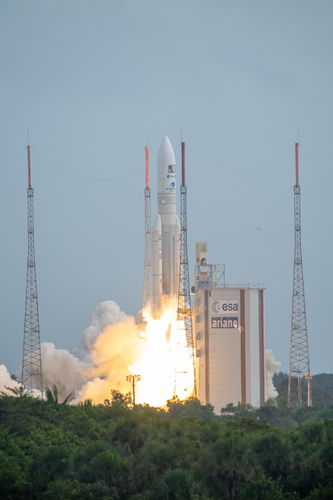
Ganymede also displays a wide range of surface ages and features, offering a geological record spanning several billion years. This complements its ‘siblings’ – ancient Callisto, which may hold clues to early conditions in the jovian system, and young and active Europa, which vents water into space.
“The scientific treasure that will be returned will undoubtedly have far-reaching implications on how we understand our Solar System and if there are potentially habitable locations beyond Earth – not just in our own cosmic neighbourhood but also well beyond in the vast number of exoplanet systems populating our Universe,” says Olivier Witasse, ESA’s Juice project scientist. “In turn, this knowledge will make us richer beings, learning more about ourselves, our origins, and our place in the Universe.”
About Juice
ESA’s Jupiter Icy Moons Explorer, ‘Juice’, is humankind’s next bold mission to the outer Solar System. It will make detailed observations of gas giant Jupiter and its three large ocean-bearing moons – Ganymede, Callisto and Europa. This ambitious mission will characterise these moons with a powerful suite of remote sensing, geophysical and in situ instruments to discover more about these compelling destinations as potential habitats for past or present life. Juice will monitor Jupiter’s complex magnetic, radiation and plasma environment in depth and its interplay with the moons, studying the Jupiter system as an archetype for gas giant systems across the Universe.
Juice launches on an Ariane 5 from Europe’s Spaceport in Kourou in April 2023. It has an eight-year cruise with flybys of Earth and Venus to slingshot it to Jupiter. It will make 35 flybys of the three large moons while orbiting Jupiter, before changing orbits to Ganymede.
Juice is a mission under ESA leadership with contributions from NASA, JAXA and the Israel Space Agency. It is the first Large-class mission in ESA’s Cosmic Vision programme.



